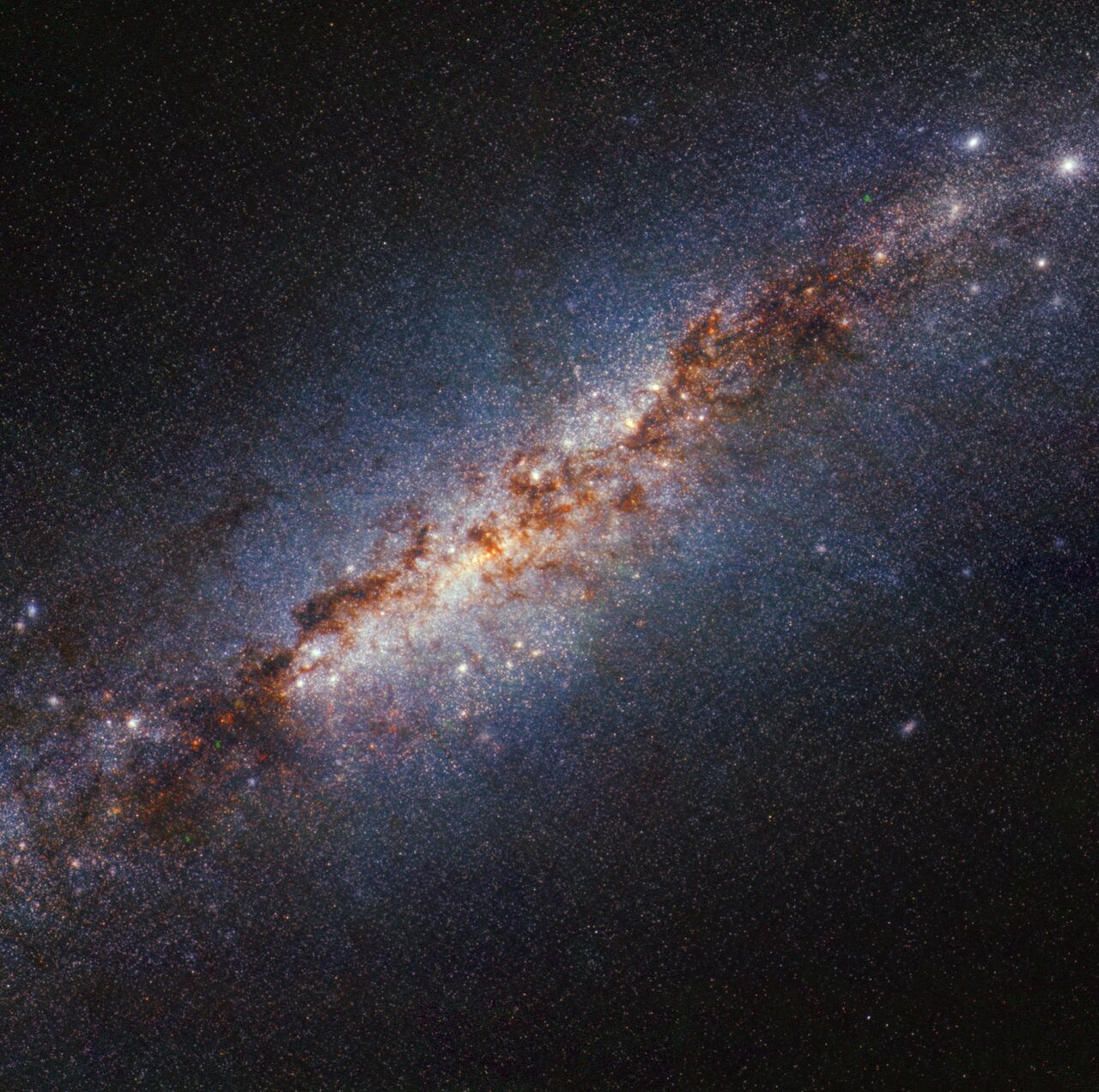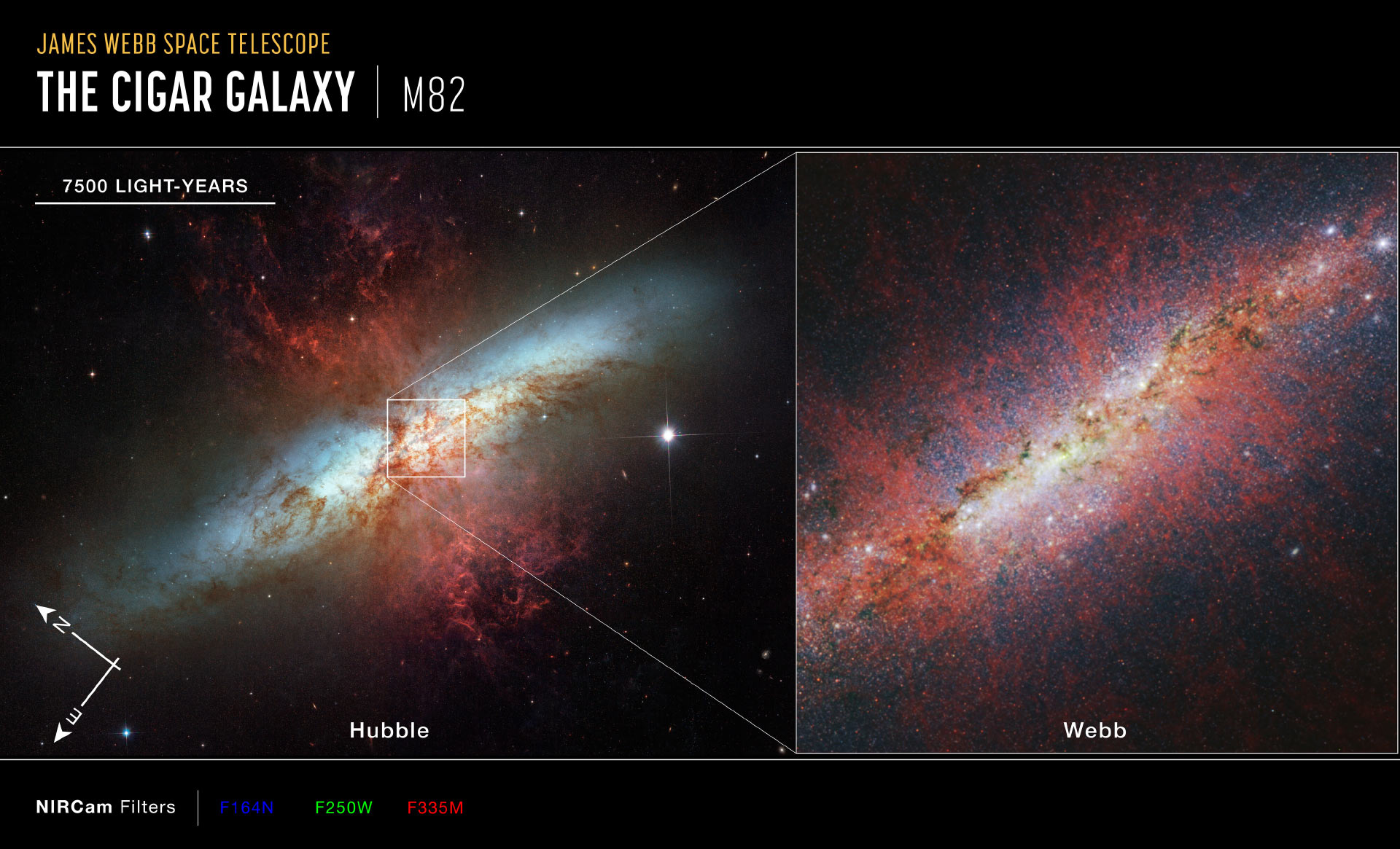New photos of the galaxy M82 (Messier 82), obtained by the James Webb Space Telescope (JWST), open up new prospects for studying this space object. M82, also known as Starburst Galaxy, is famous for being the site of high-energy star formation processes. Therefore, scientists use the data obtained by JWST to reveal the processes of star birth in its central regions.

Astronomers used the NIRCam instrument aboard James Webb to observe the galaxy. Analyzing data from different wavelengths, they revealed various features of the active zone with star formation.
“M82 has garnered a variety of observations over the years because it can be considered as the prototypical starburst galaxy. Both NASA’s Spitzer and Hubble space telescopes have observed this target. With Webb’s size and resolution, we can look at this star-forming galaxy and see all of this beautiful, new detail,” explains Alberto Bolatto, the main author of the study.

Astronomers have discovered small green spots indicating the presence of iron in the remnants of star explosions. The red areas, in turn, indicate the presence of ionized hydrogen gas, which is illuminated by the surrounding stars. The special attention of scientists was attracted by the streams of material exploding from young stars and supernovae, known as galactic winds.
“James Webb’s photographs allow us to see how strong winds and shock waves caused by young stars and supernovae affect the gas and dust from which new stars are formed,” notes Torsten Boeker of the European Space Agency, co–author of the study.
James Webb’s research is extremely important for understanding the development of galaxies, since Messier 82-like stellar outbursts were common in the early epoch of the universe.
Earlier, we reported on how scientists determined the exact distance to the most distant object in the universe.
According to science.nasa.gov
Follow us on Twitter to get the most interesting space news in time
https://twitter.com/ust_magazine


